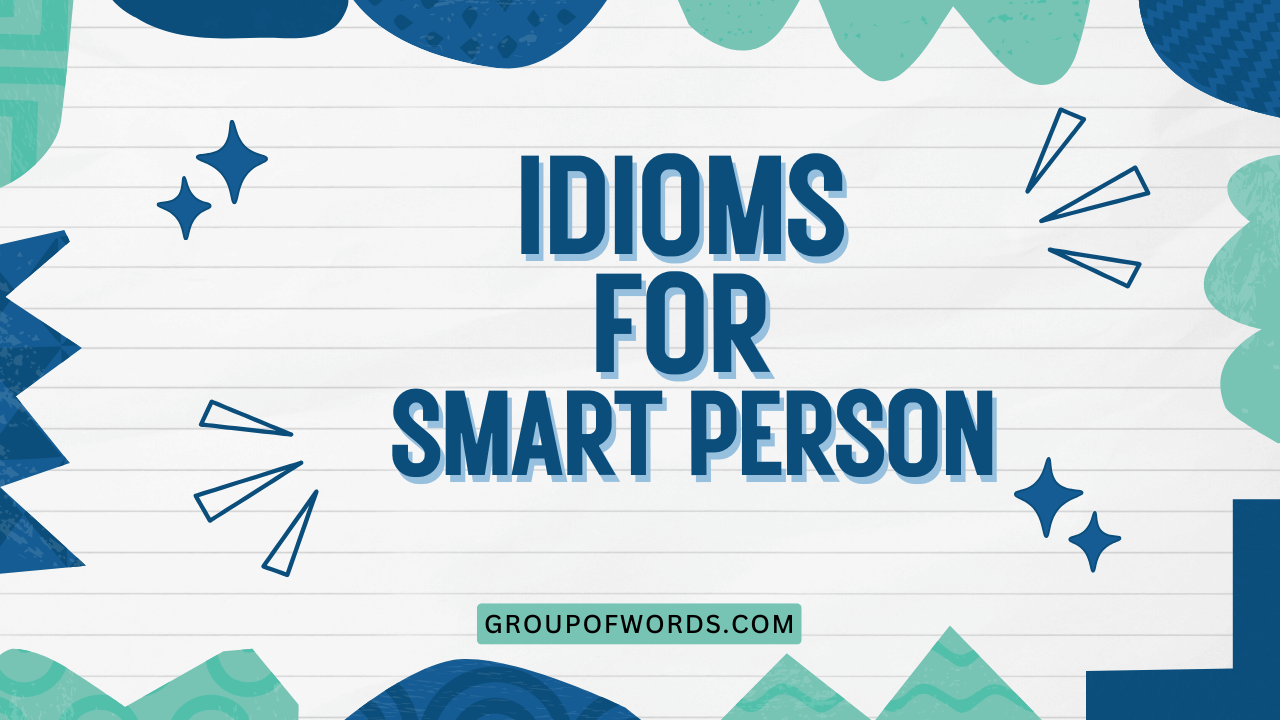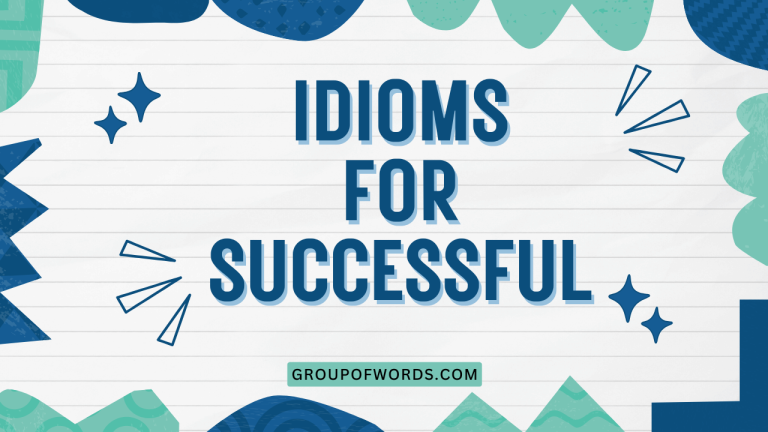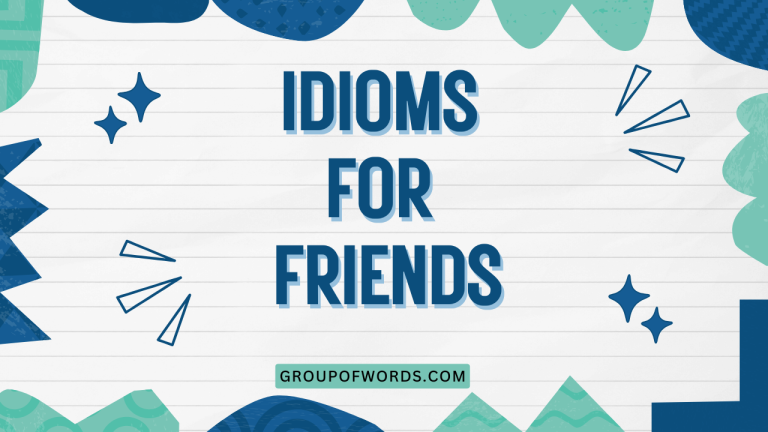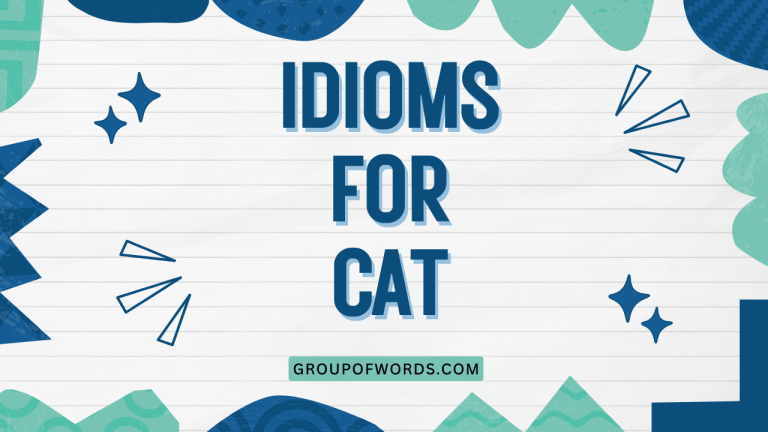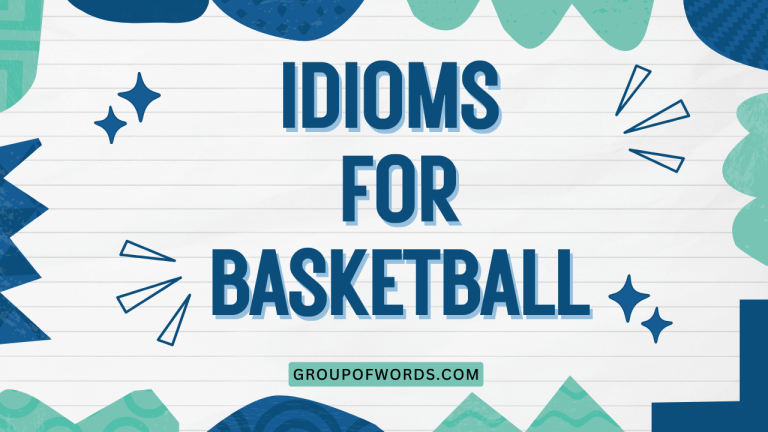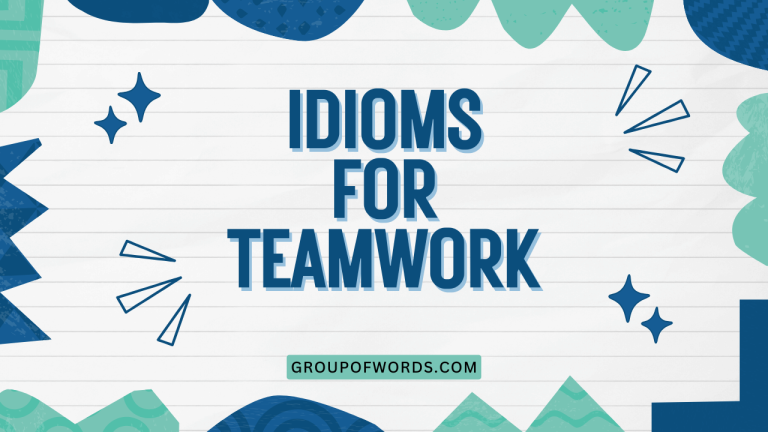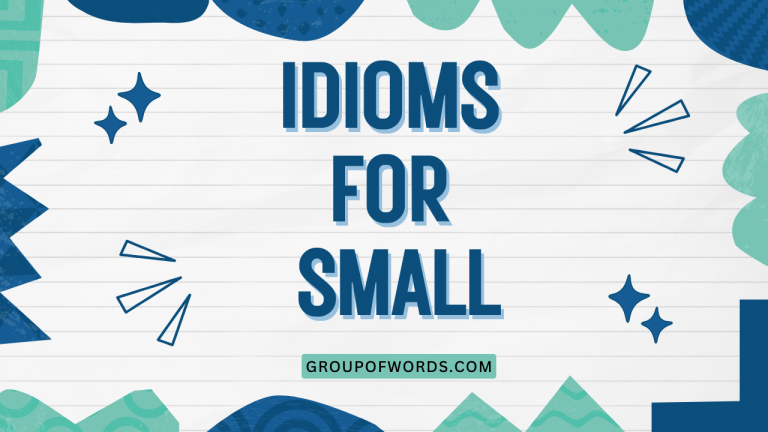Metaphors for Lost: A Comprehensive Guide
Understanding metaphors for “lost” is crucial for grasping the nuances of English language and literature. This topic delves into how speakers and writers use figurative language to express feelings of disorientation, confusion, and being without direction, both literally and figuratively.
Mastering these metaphors enriches your comprehension and expressive abilities. This guide benefits English language learners, teachers, writers, and anyone interested in exploring the creative use of language.
Table of Contents
- Introduction
- Definition of Metaphors for Lost
- Structural Breakdown of Metaphors for Lost
- Types and Categories of Metaphors for Lost
- Examples of Metaphors for Lost
- Usage Rules for Metaphors for Lost
- Common Mistakes with Metaphors for Lost
- Practice Exercises
- Advanced Topics in Metaphors for Lost
- Frequently Asked Questions
- Conclusion
Definition of Metaphors for Lost
A metaphor for “lost” is a figure of speech that uses an image, idea, or object to represent the feeling or state of being lost, whether physically, emotionally, intellectually, or spiritually. It allows us to understand the abstract concept of being lost through concrete and relatable terms.
The function of these metaphors is to evoke a deeper understanding of the experience of being lost, creating a more vivid and impactful impression on the listener or reader. Metaphors are not literal; instead, they draw connections between dissimilar things based on shared qualities or feelings.
For instance, saying “He’s lost in a sea of paperwork” doesn’t mean he’s literally drowning in paper, but it conveys the overwhelming and disorienting feeling of being consumed by it.
Classificationally, metaphors for “lost” fall under the broader category of conceptual metaphors, which are pervasive in language and thought. These metaphors shape the way we understand abstract concepts by relating them to more tangible experiences.
Contextually, these metaphors are used in literature, poetry, everyday conversation, and even technical writing to add depth and meaning to the discourse. They can be simple and direct, like “I’m adrift,” or more complex and layered, depending on the desired effect.
Structural Breakdown of Metaphors for Lost
The structure of a metaphor for “lost” typically involves two key elements: the tenor and the vehicle. The tenor is the subject being described (in this case, the feeling or state of being lost), and the vehicle is the image, idea, or object used to represent it. The connection between the tenor and vehicle is not explicit but rather implied, requiring the audience to make the association. Understanding this structure helps in both interpreting and creating effective metaphors.
For example, in the metaphor “He’s lost in the wilderness of his thoughts,” the tenor is the state of being mentally lost or confused, and the vehicle is the “wilderness,” which evokes a sense of being disoriented and without direction. The structure is inherently comparative, suggesting a similarity between the disorientation of being lost in a physical wilderness and the confusion of being lost in one’s thoughts.
The effectiveness of the metaphor depends on the audience’s ability to recognize this connection and understand the intended meaning.
Moreover, the effectiveness of a metaphor for “lost” can be enhanced by the use of supporting imagery and details. For instance, instead of simply saying “She’s lost,” one could elaborate with “She’s lost in a labyrinth of doubt, each turn leading to more confusion.” The addition of “labyrinth” and “doubt,” along with the image of twisting turns, adds depth and complexity to the metaphor, making it more evocative and impactful.
The key is to choose vehicles that resonate strongly with the intended audience and effectively convey the desired nuance of being lost.
Types and Categories of Metaphors for Lost
Metaphors for “lost” can be categorized based on the type of loss they represent and the imagery they employ. Here are some common categories:
Spatial Metaphors
Spatial metaphors relate the feeling of being lost to physical locations or movements. These are often the most literal and easily understood types of metaphors for “lost.” They leverage our understanding of physical disorientation to convey emotional or intellectual states.
Emotional Metaphors
Emotional metaphors describe the feeling of being lost through emotional states. These metaphors connect the experience of being lost with intense feelings like confusion, despair, or helplessness.
They often invoke imagery of emotional turmoil or isolation.
Intellectual Metaphors
Intellectual metaphors illustrate the state of being lost in thought or understanding. These metaphors describe the experience of being confused or unable to comprehend something.
They often involve imagery of mental mazes or intellectual darkness.
Abstract Metaphors
Abstract metaphors use intangible concepts to represent the feeling of being lost. These metaphors are often more complex and require a deeper understanding of symbolic language.
They can represent a loss of purpose, identity, or connection to something greater.
Examples of Metaphors for Lost
Here are some examples of metaphors for “lost,” organized by category:
Spatial Metaphor Examples
The following table provides examples of spatial metaphors for “lost.” Spatial metaphors use physical locations, directions, or movements to describe the feeling of being lost or disoriented.
| Metaphor | Explanation |
|---|---|
| He’s adrift at sea. | Suggests a lack of direction and control, like a boat without a rudder. |
| She’s wandering in the desert. | Implies a sense of isolation and desperation, searching for something without a clear path. |
| I’m lost in the woods. | Represents confusion and a lack of familiarity with one’s surroundings. |
| He’s gone off the beaten path. | Indicates a deviation from the norm or a loss of direction in life. |
| She’s in a maze. | Conveys a sense of being trapped and unable to find a way out. |
| I’m at a crossroads. | Represents a difficult decision point with no clear indication of the right path. |
| He’s fallen into a pit. | Suggests a sudden and unexpected loss of position or hope. |
| She’s navigating uncharted waters. | Implies a venture into unknown territory with potential dangers. |
| I’m stuck in a dead end. | Represents a situation with no progress or positive outcome. |
| He’s circling the drain. | Suggests a gradual decline or loss of control. |
| She’s lost in the shuffle. | Implies being overlooked or forgotten in a chaotic environment. |
| I’m on the wrong track. | Represents a misguided path or decision. |
| He’s gone down a rabbit hole. | Suggests being drawn into a complex and confusing situation. |
| She’s in the dark. | Implies a lack of knowledge or understanding. |
| I’m off course. | Represents a deviation from the intended plan or goal. |
| He’s between a rock and a hard place. | Suggests a difficult situation with no good options. |
| She’s in a tight spot. | Implies a challenging and precarious situation. |
| I’m in deep water. | Represents a serious or dangerous situation. |
| He’s backed into a corner. | Suggests being trapped or forced into a defensive position. |
| She’s at the end of her rope. | Implies a loss of hope and the inability to continue. |
| I’m going nowhere fast. | Expresses frustration and a lack of progress. |
| He’s spinning his wheels. | Suggests expending effort without achieving any results. |
| She’s chasing her tail. | Implies engaging in pointless or repetitive activities. |
| I’m on a wild goose chase. | Represents a futile and time-wasting pursuit. |
| He’s up a creek without a paddle. | Suggests being in a difficult situation without the means to overcome it. |
| She’s out in left field. | Implies being unconventional or out of touch with reality. |
| I’m lost in translation. | Represents a misunderstanding or miscommunication due to language or cultural barriers. |
Emotional Metaphor Examples
The following table presents examples of emotional metaphors for “lost.” Emotional metaphors use feelings and emotional states to describe the experience of being lost or disoriented.
| Metaphor | Explanation |
|---|---|
| He’s drowning in sorrow. | Suggests being overwhelmed by grief and sadness. |
| She’s lost in despair. | Implies a deep sense of hopelessness and anguish. |
| I’m engulfed by anxiety. | Represents being consumed by worry and fear. |
| He’s trapped in a cycle of grief. | Indicates a repetitive and inescapable pattern of sorrow. |
| She’s wandering through a fog of depression. | Conveys a sense of disorientation and emotional numbness. |
| I’m adrift in a sea of emotions. | Represents a lack of control and direction in one’s feelings. |
| He’s lost his spark. | Suggests a loss of enthusiasm and vitality. |
| She’s in a dark place. | Implies a state of emotional distress and unhappiness. |
| I’m feeling empty inside. | Represents a lack of fulfillment and purpose. |
| He’s a shell of his former self. | Suggests a significant loss of identity and vitality. |
| She’s lost her way. | Implies a deviation from her true path or purpose. |
| I’m at a loss for words. | Represents a moment of being overwhelmed and unable to express oneself. |
| He’s lost his grip on reality. | Suggests a disconnection from the real world and a descent into delusion. |
| She’s lost her innocence. | Implies a loss of naivety and purity. |
| I’m losing my mind. | Represents a feeling of mental instability and confusion. |
| He’s a broken man. | Suggests emotional devastation and irreparable damage. |
| She’s carrying a heavy heart. | Implies enduring significant emotional burden and sorrow. |
| I’m battling my demons. | Represents fighting against inner turmoil and personal struggles. |
| He’s haunted by his past. | Suggests being constantly affected by past experiences and regrets. |
| She’s in the throes of grief. | Implies being deeply affected by intense sorrow and mourning. |
| I’m paralyzed by fear. | Represents being unable to act due to overwhelming fear. |
| He’s consumed by jealousy. | Suggests being completely overtaken by feelings of envy and resentment. |
| She’s drowning in self-doubt. | Implies being overwhelmed by a lack of confidence and insecurity. |
| I’m spiraling into depression. | Represents a gradual descent into a state of deep sadness and hopelessness. |
| He’s blinded by rage. | Suggests being unable to think clearly due to intense anger. |
| She’s lost in her memories. | Implies being deeply absorbed in past experiences, often to the point of distraction. |
| I’m wrestling with my conscience. | Represents struggling with moral dilemmas and feelings of guilt. |
Intellectual Metaphor Examples
The following table provides examples of intellectual metaphors for “lost.” Intellectual metaphors use concepts related to thought, knowledge, and understanding to describe the experience of being lost or confused.
| Metaphor | Explanation |
|---|---|
| He’s lost in thought. | Suggests being deeply absorbed in contemplation, often to the point of distraction. |
| She’s lost in the details. | Implies being overwhelmed by the minutiae and losing sight of the bigger picture. |
| I’m lost in the jargon. | Represents being confused by technical terms and specialized language. |
| He’s lost the thread of the argument. | Indicates a failure to follow the logic or reasoning of a discussion. |
| She’s in a fog of confusion. | Conveys a sense of mental disorientation and lack of clarity. |
| I’m drawing a blank. | Represents a complete inability to recall information or ideas. |
| He’s hitting a wall. | Suggests encountering an obstacle that prevents further progress. |
| She’s chasing shadows. | Implies pursuing something elusive or unattainable. |
| I’m grasping at straws. | Represents resorting to desperate measures with little chance of success. |
| He’s barking up the wrong tree. | Suggests pursuing a mistaken or misguided approach. |
| She’s missing the point. | Implies failing to understand the central idea or significance. |
| I’m at sea with this problem. | Represents being overwhelmed and uncertain how to proceed. |
| He’s lost in a sea of information. | Suggests being overwhelmed by too much data and unable to make sense of it. |
| She’s going around in circles. | Implies engaging in repetitive and unproductive thinking. |
| I’m not on the same page. | Represents a lack of agreement or understanding between individuals. |
| He’s out of his depth. | Suggests lacking the knowledge or skills necessary to handle a situation. |
| She’s overthinking it. | Implies analyzing something excessively, leading to confusion and paralysis. |
| I’m stuck in a mental rut. | Represents being trapped in a pattern of uninspired or unproductive thinking. |
| He’s got his head in the clouds. | Suggests being unrealistic or impractical in one’s thinking. |
| She’s lost her train of thought. | Implies a disruption in the flow of ideas, making it difficult to continue. |
| I’m struggling to connect the dots. | Represents difficulty in understanding the relationships between different pieces of information. |
| He’s lost in the labyrinth of bureaucracy. | Suggests being unable to navigate the complexities of official procedures. |
| She’s drowning in paperwork. | Implies being overwhelmed by administrative tasks and documentation. |
| I’m wrestling with this concept. | Represents struggling to understand a challenging or abstract idea. |
| He’s lost in the sauce. | Suggests being confused or disoriented, especially in a complex situation. |
| She’s missing the forest for the trees. | Implies focusing on minor details at the expense of understanding the overall context. |
Abstract Metaphor Examples
The following table provides examples of abstract metaphors for “lost.” Abstract metaphors use intangible concepts, principles, or states of being to describe the feeling of being lost or disconnected.
| Metaphor | Explanation |
|---|---|
| He’s lost his way in life. | Suggests a lack of purpose or direction in one’s life journey. |
| She’s lost her identity. | Implies a loss of self-awareness and a sense of who she is. |
| I’m lost to the world. | Represents a feeling of isolation and disconnection from society. |
| He’s lost his faith. | Indicates a loss of belief in a higher power or guiding principle. |
| She’s lost her voice. | Conveys a loss of the ability to express herself or be heard. |
| I’m lost for words. | Represents being unable to articulate one’s thoughts or feelings. |
| He’s lost his bearings. | Suggests a loss of orientation and a sense of place in the world. |
| She’s lost her grip. | Implies a loss of control or stability in her life. |
| I’m lost in time. | Represents a feeling of being disconnected from the present moment. |
| He’s lost in the past. | Suggests being overly focused on past events and unable to move forward. |
| She’s lost in a dream. | Implies being detached from reality and living in a fantasy world. |
| I’m lost in translation. | Represents a misunderstanding or miscommunication due to cultural or linguistic differences. |
| He’s lost his innocence. | Suggests a loss of naivety and purity through experience. |
| She’s lost her touch. | Implies a loss of skill or ability in a particular area. |
| I’m lost in thought. | Represents being deeply absorbed in contemplation and reflection. |
| He’s lost to the void. | Suggests a complete and irreversible disappearance or loss. |
| She’s lost her way back. | Implies an inability to return to a previous state or course of action. |
| I’m lost in a sea of faces. | Represents a feeling of anonymity and insignificance in a crowd. |
| He’s lost his marbles. | Suggests a loss of sanity or mental stability. |
| She’s lost at sea. | Implies a lack of direction and purpose in her life. |
| I’m lost in the moment. | Represents being fully present and absorbed in the current experience. |
| He’s lost in the crowd. | Suggests a feeling of anonymity and being overwhelmed in a large group. |
| She’s lost in her own world. | Implies being detached from reality and engrossed in her own thoughts and fantasies. |
| I’m lost in the noise. | Represents being overwhelmed by distractions and unable to focus. |
Usage Rules for Metaphors for Lost
When using metaphors for “lost,” it’s important to consider several factors to ensure clarity and effectiveness. First, the vehicle should be relatable and easily understood by the audience. An obscure or overly complex metaphor will likely fail to convey the intended meaning. Second, the tenor and vehicle should have a clear connection. The shared qualities between the state of being lost and the chosen imagery should be apparent. Third, avoid mixing metaphors, which can lead to confusion and weaken the impact of the language.
For instance, it would be confusing to say, “He’s lost in a labyrinth of despair, but he’s also sailing smoothly.” The conflicting imagery of being trapped in a labyrinth and sailing smoothly creates a mixed metaphor that undermines the intended message. Instead, maintain consistency in the imagery to create a coherent and impactful metaphor.
For example, “He’s lost in a labyrinth of despair, each turn leading to deeper anguish.”
Additionally, consider the context in which the metaphor is used. In formal writing, it’s often appropriate to use more subtle and nuanced metaphors, while in informal conversation, more direct and expressive metaphors may be suitable.
The key is to tailor the language to the audience and the purpose of the communication. Furthermore, be mindful of overusing certain metaphors, as they can become clichés and lose their impact.
Strive for originality and creativity in the choice of vehicles to create fresh and engaging metaphors for “lost.”
Common Mistakes with Metaphors for Lost
One common mistake is using clichéd metaphors. While familiar, they lack originality and impact. For example, instead of saying “He’s lost at sea,” a more creative metaphor could be “He’s adrift in a nebula of uncertainty.” Another frequent error is mixing metaphors, which creates confusion. For instance, saying “She’s drowning in paperwork, but she’s also climbing the ladder of success” combines incompatible images. Instead, maintain a consistent image: “She’s drowning in paperwork, gasping for air amidst the rising tide of deadlines.”
Another mistake is using metaphors that are too abstract or obscure. The audience needs to understand the connection between the tenor and the vehicle. For example, “He’s lost in the hyperreality of simulacra” might be confusing to someone unfamiliar with postmodern theory. Instead, a clearer metaphor would be “He’s lost in a world of illusions, unable to distinguish truth from falsehood.” Lastly, be careful not to take metaphors too literally. Remember that they are figures of speech, not factual statements. For example, if you say, “She’s lost her way,” don’t expect someone to pull out a map; it simply means she’s deviated from her intended path or purpose.
Here’s a table illustrating common mistakes and corrections:
| Incorrect | Correct | Explanation |
|---|---|---|
| He’s lost at sea, but he’s also on top of the world. | He’s lost at sea, struggling against the relentless waves. | Avoid mixing metaphors with conflicting images. |
| She’s lost in the quantum entanglement of existence. | She’s lost in the complexities of life, searching for meaning. | Use relatable vehicles that the audience can understand. |
| He’s a lost sheep. | He’s a wanderer, searching for a place to belong. | Avoid clichéd metaphors that lack originality. |
| She’s lost her way, so let’s call a taxi. | She’s lost her way, feeling uncertain about her future. | Remember that metaphors are figurative, not literal. |
Practice Exercises
Test your understanding of metaphors for “lost” with these exercises.
Exercise 1: Identify the Metaphor
Identify the metaphor for “lost” in each sentence.
| Question | Answer |
|---|---|
| 1. He’s adrift in a sea of doubt. | adrift in a sea of doubt |
| 2. She’s lost in the wilderness of her thoughts. | lost in the wilderness of her thoughts |
| 3. I’m wandering through a maze of regulations. | wandering through a maze of regulations |
| 4. He’s fallen into a pit of despair. | fallen into a pit of despair |
| 5. She’s navigating uncharted waters of grief. | navigating uncharted waters of grief |
| 6. I’m stuck in a dead end of frustration. | stuck in a dead end of frustration |
| 7. He’s circling the drain of failure. | circling the drain of failure |
| 8. She’s lost in the shuffle of bureaucracy. | lost in the shuffle of bureaucracy |
| 9. I’m on the wrong track of assumptions. | on the wrong track of assumptions |
| 10. He’s gone down a rabbit hole of conspiracy theories. | gone down a rabbit hole of conspiracy theories |
Exercise 2: Create Your Own Metaphor
Create a metaphor for “lost” for each scenario.
| Scenario | Possible Metaphor |
|---|---|
| 1. Feeling overwhelmed by a complex project. | I’m drowning in a deluge of data. |
| 2. Losing direction in life after a major change. | He’s adrift without a compass. |
| 3. Experiencing confusion while learning a new subject. | She’s lost in the fog of unfamiliar concepts. |
| 4. Feeling emotionally disconnected from others. | I’m isolated on an island of loneliness. |
| 5. Struggling to find a solution to a difficult problem. | He’s trapped in a puzzle with missing pieces. |
| 6. Feeling a loss of identity after a significant event. | She’s a ghost of her former self. |
| 7. Being unable to express your thoughts clearly. | I’m lost for words in a silent storm. |
| 8. Feeling disconnected from your purpose in life. | He’s wandering aimlessly through a barren landscape. |
| 9. Experiencing a loss of faith or belief. | She’s lost her anchor in a turbulent sea. |
| 10. Being overwhelmed by grief and sorrow. | I’m submerged in a well of tears. |
Exercise 3: Correct the Mixed Metaphor
Correct the mixed metaphors in the following sentences.
| Question | Answer |
|---|---|
| 1. He’s lost in a sea of doubt, but he’s also climbing the ladder of success. | He’s lost in a sea of doubt, struggling to stay afloat. |
| 2. She’s drowning in paperwork, and she’s also running a tight ship. | She’s drowning in paperwork, gasping for air amidst the rising tide. |
| 3. I’m lost in the woods, but I’m also on the right track. | I’m lost in the woods, desperately searching for a path. |
| 4. He’s fallen into a pit of despair, but he’s also reaching for the stars. | He’s fallen into a pit of despair, struggling to climb out. |
| 5. She’s navigating uncharted waters, and she’s also sailing smoothly. | She’s navigating uncharted waters, facing unpredictable storms. |
| 6. I’m stuck in a dead end, but I’m also making great strides. | I’m stuck in a dead end, desperately seeking an escape route. |
| 7. He’s circling the drain, but he’s also on the upswing. | He’s circling the drain, fighting to stay above the surface. |
| 8. She’s lost in the shuffle, and she’s also standing out from the crowd. | She’s lost in the shuffle, struggling to be noticed. |
| 9. I’m on the wrong track, but I’m also heading in the right direction. | I’m on the wrong track, desperately trying to get back on course. |
| 10. He’s gone down a rabbit hole, and he’s also seeing the big picture. | He’s gone down a rabbit hole, becoming increasingly disoriented. |
Advanced Topics in Metaphors for Lost
At an advanced level, the study of metaphors for “lost” involves delving into the philosophical and psychological implications of these figures of speech. Conceptual Metaphor Theory, developed by George Lakoff and Mark Johnson, proposes that metaphors are not merely linguistic devices but fundamental structures of thought.
This theory suggests that our understanding of abstract concepts like “lost” is shaped by underlying metaphorical mappings that relate them to more concrete experiences.
Furthermore, advanced analysis can explore the cultural variations in metaphors for “lost.” Different cultures may employ different imagery and symbolism to represent the experience of being lost, reflecting their unique values, beliefs, and environmental contexts. For example, a culture with a strong seafaring tradition may use nautical metaphors more frequently than a culture that is landlocked.
Studying these cultural variations can provide insights into the diverse ways in which humans perceive and conceptualize the world.
Additionally, the use of metaphors for “lost” in literature and art can be analyzed in depth. Authors and artists often employ these metaphors to convey complex emotions, explore existential themes, and create powerful and evocative imagery.
Analyzing the specific choices they make in their use of metaphors can reveal deeper layers of meaning and enhance our appreciation of their work. Moreover, the study of metaphors for “lost” can be extended to other related concepts, such as “finding,” “guidance,” and “direction,” to gain a more comprehensive understanding of the metaphorical landscape surrounding these ideas.
Frequently Asked Questions
Here are some frequently asked questions about metaphors for “lost.”
- What is the difference between a metaphor and a simile?
A metaphor directly equates two unlike things, while a simile uses “like” or “as” to make a comparison. For example, “He is lost in thought” is a metaphor, while “He is like a lost sheep” is a simile.
- Why are metaphors for “lost” so common?
The feeling of being lost is a universal human experience, both literally and figuratively. Metaphors provide a way to express these complex and often overwhelming emotions in a relatable and understandable way.
- How can I improve my use of metaphors for “lost”?
Read widely, pay attention to the metaphors used by others, and practice creating your own. Experiment with different vehicles and consider the context and audience when choosing your metaphors.
- Are some metaphors for “lost” better than others?
The effectiveness of a metaphor depends on its clarity, originality, and relevance to the context and audience. A well-chosen metaphor can be powerful and evocative, while a clichéd or confusing metaphor can weaken the impact of your language.
- Can metaphors for “lost” be used in technical writing?
While technical writing typically emphasizes clarity and precision, metaphors
can be used sparingly to illustrate complex concepts or make the text more engaging. However, it’s important to ensure that the metaphors are clear, relevant, and do not introduce ambiguity.
- How do cultural differences affect the interpretation of metaphors for “lost”?
Cultural background can significantly influence the interpretation of metaphors. Certain images or symbols may have different meanings in different cultures, so it’s important to be aware of these potential differences when using metaphors for “lost” in cross-cultural communication.
- What is the role of context in understanding metaphors for “lost”?
Context is crucial for understanding metaphors. The surrounding words, sentences, and overall situation provide clues about the intended meaning of the metaphor and help the audience make the appropriate connections between the tenor and the vehicle.
- Can metaphors for “lost” be used in visual arts?
Yes, metaphors for “lost” can be effectively conveyed through visual arts. Artists can use imagery, symbolism, and composition to represent the feeling of being lost or disoriented, creating powerful and thought-provoking works of art.
- How can metaphors for “lost” be used to create empathy?
By using vivid and relatable metaphors, writers and speakers can help their audience understand and connect with the experience of being lost, fostering empathy and compassion. A well-chosen metaphor can evoke strong emotions and create a deeper understanding of the human condition.
- What are some common sources of inspiration for metaphors for “lost”?
Common sources of inspiration include nature (e.g., forests, oceans, deserts), architecture (e.g., mazes, labyrinths, dead ends), emotions (e.g., fear, confusion, despair), and abstract concepts (e.g., time, identity, purpose). Drawing inspiration from these diverse sources can help you create original and impactful metaphors for “lost.”
Conclusion
In conclusion, metaphors for “lost” offer a powerful and versatile means of expressing the complex experience of being without direction, whether physically, emotionally, intellectually, or spiritually. By understanding the structure, types, and usage rules of these metaphors, you can enhance your ability to both interpret and create evocative language.
Avoiding common mistakes, practicing regularly, and exploring advanced topics will further refine your skills in this area. Whether you are a writer, a speaker, or simply someone interested in the nuances of language, mastering metaphors for “lost” will enrich your communication and deepen your understanding of the human condition.
The ability to articulate the feeling of being lost with creativity and precision is a valuable asset in both personal and professional contexts, allowing you to connect with others on a deeper level and convey complex ideas with clarity and impact.
